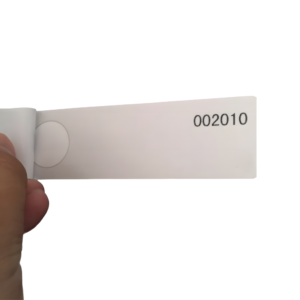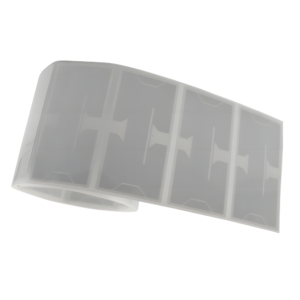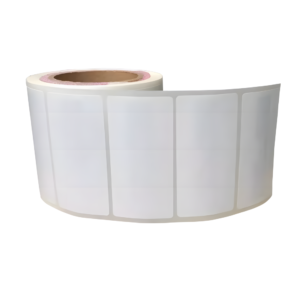
Top Different Types of RFID Chip
Looking for the perfect RFID chip for your project? Consider factors like project requirements, application, cost, and availability. Make the right choice with our range of high-quality RFID chips.
RFID tags are categorized into three groups based on their frequency ranges: low frequency (LF), high frequency (HF), and ultra-high frequency (UHF). In general, the lower the frequency of the RFID system, the shorter the read range and slower the data read rate.
RFID chips are compact integrated circuits found within RFID tags or labels. Despite their size, these microchips are intricately designed, housing essential components like controllers, memory, and microprocessors. The chip functions by harnessing energy from the antenna’s waves, with the reader processing this information to transmit data stored within the same circuit. Constant advancements in integrated circuit technology result in the release of new chips regularly, boasting larger internal memories and improved quality. Present-day chips offer a wide array of features, including password protection, data encryption capabilities, and the option for an EAS alarm system. Some chips even merge UHF RFID technology with NFC technology, exemplified by the EM4423.
Explore a world of possibilities with our wide range of integrated circuits (ICs). Find the perfect solution for your needs today.
Low Frequency (LF) RFID 125K – 134K
- UID: It is the unique identifier of LF tags. Since there cannot be duplicates, this means each tag is unique worldwide. It is factory locked and cannot be changed. Some for read only, some both for read and write.
- Password: A password can be entered so that no unauthorized person can write over the chip.
- Memory: It is designed to write data that users need into 4-byte blocks.
The most commonly used types of chips (IC) in low frequency
| Frequency | Chip Model | Memory | Protocol | Brand |
| Low Frequency 125~134.2Khz | TK4100 | 64bit | / | China |
| Low Frequency 125~134.2Khz | EM4200 | 64bit | / | EM-Marin |
| Low Frequency 125~134.2Khz | EM4305 | 512bit | ISO11784/785 | EM-Marin |
| Low Frequency 125~134.2Khz | EM4550 | 1K bit | / | EM-Marin |
| Low Frequency 125~134.2Khz | EM4069 | 128bit | / | EM-Marin |
| Low Frequency 125~134.2Khz | T5577 | 363bit | ISO11784/785 | Atmel |
| Low Frequency 125~134.2Khz | Hitag 1 | 2Kbit | / | NXP |
| Low Frequency 125~134.2Khz | Hitag 2 | 256 it | / | NXP |
| Low Frequency 125~134.2Khz | Hitag S256 | 256bit | ISO11784/785 | NXP |
High Frequency (HF) RFID NFC 13.56MHz
- UID: It is the unique identifier of NFC tags. Since there cannot be duplicates, this means each tag is unique worldwide. It is factory locked and cannot be changed. It has a 7-byte memory, which is equivalent to 14 hexadecimal characters. Example: 04 9C 64 D2 45 2B 80
- Password: A password can be entered so that no unauthorized person can write over the chip.
- Memory: It is designed to write data that users need into 4-byte blocks. The standard encoding format supported by all devices is NDEF. You can write URLs, dates, batches, locations, contacts, etc.
The most commonly used types of chips (IC) in high frequency NFC.
| Frequency | Chip Model | Memory | Protocol | Brand |
| High Frequency 13.56MHz | FM11RF08 | 1K byte | ISO14443A | Fudan |
| High Frequency 13.56MHz | MIFARE Classic 1K | 1K byte | ISO14443A | NXP |
| High Frequency 13.56MHz | MIFARE Classic 4K | 4K byte | ISO14443A | NXP |
| High Frequency 13.56MHz | MIFARE Ultralight | 512 bit | ISO14443A | NXP |
| High Frequency 13.56MHz | MIFARE Ultralight EV1 | 640bit /1312bit | ISO14443A | NXP |
| High Frequency 13.56MHz | MIFARE Ultralight C | 1536 bit | ISO14443A | NXP |
| High Frequency 13.56MHz | MIFARE Mini S20 | 320 byte | ISO14443A | NXP |
| High Frequency 13.56MHz | NTAG213 | 180byte | ISO14443A | NXP |
| High Frequency 13.56MHz | NTAG215 | 540byte | ISO14443A | NXP |
| High Frequency 13.56MHz | NTAG216 | 924byte | ISO14443A | NXP |
| High Frequency 13.56MHz | MIFARE Desfire EV1 2K | 2K byte | ISO14443A | NXP |
| High Frequency 13.56MHz | MIFARE Desfire EV1 4K | 4K byte | ISO14443A | NXP |
| High Frequency 13.56MHz | MIFARE Desfire EV1 8K | 8K byte | ISO14443A | NXP |
| High Frequency 13.56MHz | MIFARE Desfire EV2 2K | 2K byte | ISO14443A | NXP |
| High Frequency 13.56MHz | MIFARE Desfire EV2 4K | 4K byte | ISO14443A | NXP |
| High Frequency 13.56MHz | MIFARE Desfire EV2 8K | 8K byte | ISO14443A | NXP |
| High Frequency 13.56MHz | MIFARE Desfire EV3 2K | 2K byte | ISO14443A | NXP |
| High Frequency 13.56MHz | MIFARE Desfire EV3 4K | 4K byte | ISO14443A | NXP |
| High Frequency 13.56MHz | MIFARE Desfire EV3 8K | 8K byte | ISO14443A | NXP |
| High Frequency 13.56MHz | MIFARE Plus S-2K/ X-2K | 2K byte | ISO14443A | NXP |
| High Frequency 13.56MHz | MIFARE Plus S-4K/ X-4K | 4K byte | ISO14443A | NXP |
| High Frequency 13.56MHz | SR176 | 176bit | ISO14443A | ST |
| High Frequency 13.56MHz | SR512 | 512bit | ISO14443A | ST |
| High Frequency 13.56MHz | SRIX4K | 4096bit | ISO14443A | ST |
| High Frequency 13.56MHz | CIPURSE move | 304Byte | ISO14443A | Infineon |
| High Frequency 13.56MHz | CIPURSE 4move | 1K/2K/4KByte | ISO14443A | Infineon |
| High Frequency 13.56MHz | SLE66R35 | 1K Byte | ISO14443A | Siemens |
| High Frequency 13.56MHz | SLE66R01L | 48Byte | ISO14443A | Siemens |
| High Frequency 13.56MHz | LRI2K | 2048bit | ISO15693/ 18000-3 | ST |
| High Frequency 13.56MHz | I CODE SLIX 2 | 2528bit | ISO15693 / 18000-3 | NXP |
| High Frequency 13.56MHz | I CODE SLIX-L | 512bit | ISO15693 / 18000-3 | NXP |
| High Frequency 13.56MHz | I CODE SLIX | 1024bit | ISO15693 / 18000-3 | NXP |
| High Frequency 13.56MHz | I CODE SLIX-S | 2048bit | ISO15693 / 18000-3 | NXP |
Ultra-High Frequency (UHF) RFID 860MHz-960MHz
- EPC: The Electronic Product Code is a universal identifier to provide a unique identity for every object and product. The serial number can be customized. Example: F4500019081201311700680D
- User memory: It is designed to record the data required by users, such as dates, batches and product expiry date.
- TID: It is the unique identifier of RFID tags. Since there cannot be duplicates, this means each tag is unique worldwide. It is factory locked and cannot be changed. Example: E200001908120237172068DA
- Password: A password can be entered so that no unauthorized person can write over the chip.
The most commonly used types of chips (IC) in ultra-high frequency.
| UHF ( 868-916Mhz) Brand | Chip Model | User Memory | EPC | TID |
| ALIEN | Higgs 3 | 512 | 96 | 32 |
| ALIEN | Higgs 4 | 128 | 128 | 32 |
| ALIEN | Higgs 9 | 688 | 496 | 48 |
| NXP | UCODE 7xm | 2048 | 448 | 96 |
| NXP | UCODE 7xm+ | 2048 | 448 | 96 |
| NXP | UCODE G2iM | 320 – 640 | 128 – 448 | 96 |
| NXP | UCODE 8 | 0 | 128 | 96 |
| NXP | UCODE 8m | 32 | 96 | 96 |
| NXP | UCODE 9 | 0 | 96 | 96 |
| NXP | UCODE 9xe | 0 | 128 | 96 |
| NXP | UCODE DNA | 3072 | 224 | 96 |
| NXP | UCODE DNA Track | 256 | 448 | 96 |
| Impinj | Monza 4D | 32 | 128 | 96 |
| Impinj | Monza 4E | 128 | 496 | 96 |
| Impinj | Monza 4QT | 512 | 128 | 96 |
| Impinj | Monza 4U | 512 | 128 | 48 |
| Impinj | Monza R6 | 0 | 96 | 96 |
| Impinj | Monza R6-P | 32/64 | 128/96 | 96 |
| Impinj | M730 | 0 | 128 | 96 |
| Impinj | M750 | 32 | 96 | 96 |
| Impinj | M830 | 0 | 128 | 96 |
| Impinj | M850 | 32 | 96 | 96 |
| EM | EM4425 | 1056 | 480 | 64 |
The main manufacturers of integrated circuits (IC)
- Impinj
- NXP Semiconductors
- Alien Technology
|
RFID Chip |
TID Header |
EPC Word Length |
USR Word Length |
TID Word Length |
EPC Bit Length |
USR Bit Length |
TID Bit Length |
|
Alien Higgs 2 |
E2003411 |
6 |
0 |
2 |
96 |
0 |
32 |
|
Alien Higgs 3* |
E2003412 |
30 |
32 |
4 |
480 |
512 |
64 |
|
Alien Higgs 4 |
E2003414 |
8 |
8 |
4 |
128 |
128 |
64 |
|
Alien Higgs EC |
E2003811 |
8 |
8 |
3 |
128 |
128 |
48 |
|
Alien Higgs 9* |
E2004715 |
31 |
43 |
3 |
496 |
688 |
48 |
|
ASYGN AS321x |
E283A… |
12 |
8 |
6 |
192 |
128 |
96 |
|
Axzon Magnus S3** |
E2026… |
8 |
8 |
4 |
128 |
128 |
64 |
|
EM Micro 4124 |
E200B080 |
6 |
0 |
2 |
96 |
0 |
64 |
|
EM Micro 4126 |
E200B… |
13 |
0 |
2 |
208 |
0 |
32 |
|
EM Micro 4152 aura-sense** |
E200B… |
6 |
0 |
6 |
96 |
0 |
96 |
|
EM Micro 4227 aura-C** |
E200B… |
26 |
80-112 |
3 |
416 |
1280-1792 |
48 |
|
EM Micro 4325 |
E200B… |
22 |
192 |
3 |
352 |
3072 |
48 |
|
EM Micro 4421 echo-T |
E200B… |
14 |
8-14 |
6 |
224 |
128-224 |
96 |
|
EM Micro 4423 echo |
E200B… |
8-14 |
10-4 |
6 |
128-224 |
160-64 |
96 |
|
EM Micro 4425 echo-V |
E200B… |
6 |
30 |
6 |
96 |
480 |
96 |
|
Impinj Monza 1 |
E200104. |
6 |
0 |
2 |
96 |
0 |
32 |
|
Impinj Monza 1a |
E200105. |
6 |
0 |
2 |
96 |
0 |
32 |
|
Impinj Monza 2 |
E200107. |
6 |
0 |
2 |
96 |
0 |
32 |
|
Impinj Monza 3 |
E200109. |
6 |
0 |
2 |
96 |
0 |
32 |
|
Impinj Monza 4D |
E2801100 |
8 |
2 |
6 |
128 |
32 |
96 |
|
Impinj Monza 4E |
E280110C |
31 |
8 |
6 |
496 |
128 |
96 |
|
Impinj Monza 4I |
E280111. |
16 |
30 |
6 |
256 |
480 |
96 |
|
Impinj Monza 4QT |
E2801105 |
8 |
32 |
6 |
128 |
512 |
96 |
|
Impinj Monza 4U |
E2801104 |
8 |
32 |
6 |
128 |
512 |
96 |
|
Impinj Monza 5 |
E2801130 |
8 |
0 |
6 |
128 |
0 |
96 |
|
Impinj Monza 6 |
E2801160 |
6 |
0 |
6 |
96 |
0 |
96 |
|
Impinj Monza R6-A |
E2801171 |
6 |
0 |
6 |
96 |
0 |
96 |
|
Impinj Monza R6-B |
E2801171 |
6 |
0 |
6 |
96 |
0 |
96 |
|
Impinj Monza R6-P |
E2801170 |
8 |
4 |
6 |
128 |
64 |
96 |
|
Impinj M730 |
E2801191 |
8 |
0 |
6 |
128 |
0 |
96 |
|
Impinj M750 |
E2801190 |
6 |
2 |
6 |
96 |
32 |
96 |
|
NXP Ucode 7 |
E2806810|E2806890 |
8 |
0 |
6 |
128 |
0 |
96 |
|
NXP Ucode 7xm |
E2806D12 |
28 |
64 |
6 |
448 |
1024 |
96 |
|
NXP Ucode 7xm+ |
E2806F12 |
28 |
128 |
6 |
448 |
2048 |
96 |
|
NXP Ucode 8 |
E2806894 |
8 |
0 |
6 |
128 |
0 |
96 |
|
NXP Ucode 8m |
E2806994 |
6 |
2 |
6 |
96 |
32 |
96 |
|
NXP Ucode 9 |
E2806995 |
6 |
0 |
6 |
96 |
0 |
96 |
|
NXP Ucode DNA** |
E2C06892 |
28 |
192 |
6 |
448 |
3072 |
96 |
|
NXP Ucode DNA City** |
E2C06B12 |
14 |
0 |
6 |
224 |
0 |
96 |
|
NXP Ucode DNA Track** |
E2C06C12 |
28 |
16 |
6 |
448 |
256 |
96 |
|
NXP Ucode EPC Gen2 |
E2006001 |
6 |
14 |
2 |
96 |
224 |
32 |
|
NXP Ucode G2iL |
E2006805 |
8 |
0 |
4 |
128 |
0 |
64 |
|
NXP Ucode G2iL |
E2006806 |
8 |
0 |
4 |
128 |
0 |
64 |
|
NXP Ucode G2iL+ |
E2006807 |
8 |
0 |
4 |
128 |
0 |
64 |
|
NXP Ucode G2iM |
E200680A |
16 |
32 |
4 |
256 |
512 |
64 |
|
NXP Ucode G2iM+ |
E200680B |
28 |
40 |
4 |
448 |
640 |
64 |
|
NXP Ucode G2XL |
E2006004 |
15 |
0 |
4 |
240 |
0 |
64 |
|
NXP Ucode G2XM |
E2006003 |
15 |
32 |
4 |
240 |
512 |
64 |
|
TegoChip XL |
E2817… |
31 |
464 |
16 |
496 |
7424 |
256 |
Discover the RFID product or solution that fits your business needs. Let us assist you in making the right decision.





